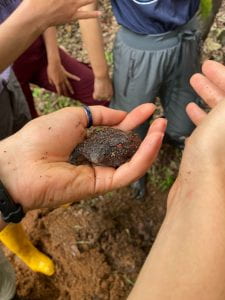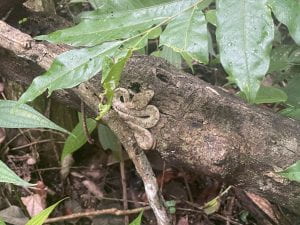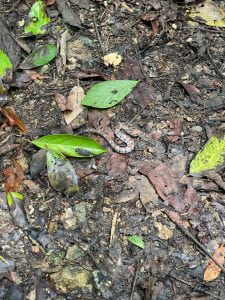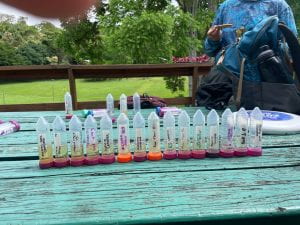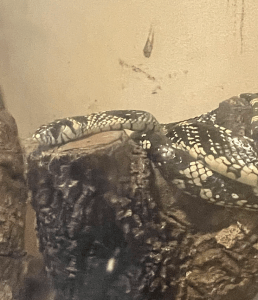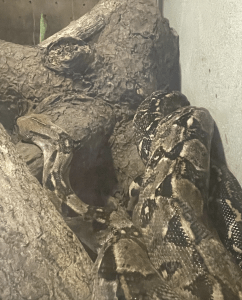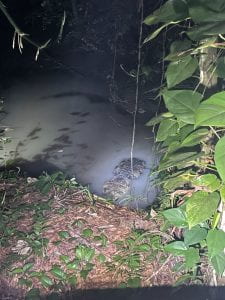“GOBBLE GOBBLE” That’s how day 3 started at about 4 am when I got woken up by a LOUD turkey under our building. I quickly learned just how active a rainforest can be before the sun even comes up.
Today we were tasked with coming up with a research question to ask about camera traps. Camera traps are motion sensitive cameras set up outside that take pictures of any movement (animals) in their range. We wanted to know how species richness of vertebrate animals varies on human constructed paths versus pure jungle areas. Our day was spent hiking along paths setting up cameras on the trail and then bushwhacking to get to a spot in the forest that was further off the trail.
Planning our camera trap locations
Flagging our camera trap 🙂
While we were on the trails with the intention of setting up the camera traps, we saw many cool unexpected things too. We saw a large cat footprint (jaguar or puma), some huge leaf cutter ant mounds, and multiple reptiles. I saw a pink-throated lichen anole, a silky anole, a rose bellied lizard , a neotropical green anole high in a tree, and the coolest part of today: a snake! While I did not get a great look at this snake as it quickly slithered away from the trail when we rounded a corner, I still observed some identifying features. It was about 4 feet long with a slender monochromatic brownish grey back and reddish belly. The scales were flat on its back and it slithered into grasses on the side of the trail. This all leads me to believe it was a racer of some sort, though I will never know for sure.
Rose bellied lizard
Silky anole
All in all, today had some really cool jungle sightings, and though it is HOT, I am loving the sticky rainforest.
See yall later!
Claire C






